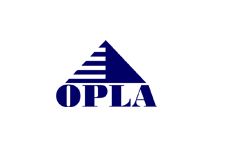First-to-File in Plain English
The U.S. system is “first to file,” not “first to invent.” If someone files before you—even with a similar idea—you can lose the ability to claim it later. Early filing protects the seed of your idea, not just the finished tree. Practically, that means you can capture the core concept now and add polish in your non-provisional (utility) application within 12 months.
What “Too Early” Actually Looks Like
If you can answer these four questions, you’re almost certainly not too early:
- What problem are you solving and what’s your solution (in plain English)?
- Could a skilled person build and use it from your write-up and drawings?
- Do you have sketches/block diagrams or flows that show components and steps?
- Can you list credible alternatives (materials, algorithms, form factors, architectures) you might try next?
You don’t need a working prototype, and your dimensions or code can still be in flux—clarity and completeness matter more than polish.
Your 12-Month Runway: How to Use It
- Market tests: pilots, landing pages, paid trials—collect data without forfeiting rights.
- Engineering sprints: refine tolerances, switch materials, A/B algorithm choices.
- Capital plan: pitch with “patent pending,” showing a timeline to utility filing and international options.
- Evidence building: logs, test results, photos, and design notebooks that strengthen later claims.
Risk of Waiting
- Priority race: A competitor or partner can file first.
- Public disclosure traps: Showcasing online, selling, or publishing may create prior art; some countries have no grace period. If you need to talk, file first or use a tight NDA.
- Investor optics: No filing can read as “not ready” or “unprotected,” which can slow deals.
What a “Good-Enough” Early Filing Contains
- Problem + solution (plain English).
- Build & use details: parts, steps, parameters, ranges, materials; consistent labels across text and figures.
- Drawings/flows: system overview, key subassembly, method steps, control/algorithm block diagram, and at least two obvious variations.
- Alternatives: the broadest credible ways you (or a copycat) would implement it—write them all down.
Decision Matrix: File This Week?
- Hardware with long lead times: File now; protect core mechanism + manufacturing variations while BOM is still shifting.
- Software platform about to demo: File now; disclose data flows, modules, and algorithm options; continue refactoring under “pending.”
- Stealth startup pitching: File before investor meetings or vendor talks; no surprises around confidentiality.
How Early Filers Build Momentum
- Roadmap alignment: Convert the provisional into a utility with claims that match what you actually validated.
- Portfolio layering: File improvement provisionals during the year as you learn; roll the winners into continuations and divisionals later.
- Storytelling: In the pitch deck, show a clear IP timeline: “Provisional filed → utility in Q2 → continuation on feature X in Q3.”
Common Objections (and Better Answers)
- “What if we pivot?” Early filings should already list your likely pivots as alternatives—capture them now so you can claim them later.
- “Investors want granted patents.” Some do; most want a plan: clear path to utility claims that block fast followers.
- “We’ll just use NDAs.” Helpful, but they don’t stop others from filing first if they independently develop—or from overseas novelty issues.
Fast Start: 90-Minute Early-Filing Sprint
- Write a one-page problem/solution summary and list five alternatives you’d try.
- Sketch a block diagram and a simple flowchart (label everything).
- Draft “build & use” notes with ranges and options for key parts/steps.
- List failure/edge cases and how the system responds.
- Organize into a short spec; label figures; save to PDF. You’re closer than you think.
FAQ
Do I need a prototype? No—enablement in writing + figures is enough. A prototype helps testing, not filing.
Will “patent pending” protect me? It’s a warning, not a shield. Enforceable rights come after a patent grants. Use the pending year to position for strong claims.
What about international? Many countries require absolute novelty. If global is on the table, file before you disclose publicly and consider a PCT within the 12-month window.
Want the step-by-step provisional guide? →


